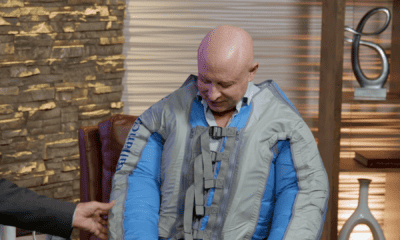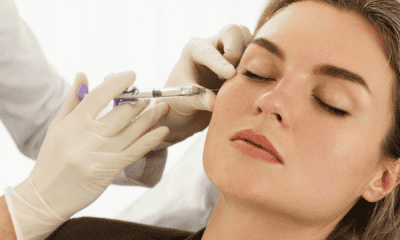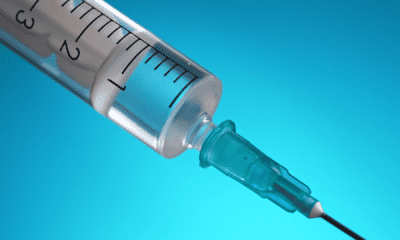Plastic surgery results are both a product of surgical expertise and patient understanding. When it comes to recovery, the burden for excellent results is transferred from surgeon to patient. The best surgeons are not only the most skilled at surgery, but apply tremendous effort in helping patients understand the responsibilities required by them to achieve their goals.
“As plastic surgeons, we’ve all had times when we thought we did the perfect surgery, and, unfortunately, we don’t always get the perfect results,” shares board certified plastic surgeon Dr. Shaun Parson of Arizona. “Sometimes, that’s not always our fault.”
Results Truly Resolve After the Recovery has Ended
The recovery from surgery is, in most cases, almost as important as the surgery itself. Near perfection can be accomplished in the operating room, but for that great surgery to solidify, patients need to take recovery seriously. To this end, plastic surgeons commit an extensive amount of resources and time to educating patients on what they can and can’t do following surgery and for how long. These guidelines are how surgical results finalize and last, as well as how complications can be avoided.
Dr. Stephan Finical, a board certified plastic surgeon in Charlotte, describes how being too active post-surgery can lead to complications that otherwise wouldn’t have surfaced. “I think the biggest non-cooperative thing is when people get back to too much activity too early,” he explains. “That’s the biggest problem I’ve had with folks either who have, God-forbid, a hematoma or just swelling that takes so long to get rid of. They go back to exercise, they get their blood pressure jacked up and, unfortunately, it slows the recovery process.”
It is one of the more difficult aspects of surgery for patients, the recovery. Patients want to resume their normal lives and get back to important things like exercising or taking care of their children/households. Especially when they’re feeling “good” after a surgery, they may be tempted to disregard physician instructions, a decision that more times than not extends the recovery period and may have a detrimental effect on long-term results.
“I’m astounded how even though we have them sign what they have to do…the next thing they do is housework, or they go to the gym,” shares board certified plastic surgeon Dr. Brooke Seckel of Boston. “Those types of things lead to, in my opinion, delayed recovery.”
Non-Surgical Procedures – Less to Worry About?
Non-surgical procedures continue to skyrocket, a trend that has a lot to do with patients encouraged by the fact that these procedures “have no downtime”. Patients who may never have considered surgery and taking time off to recover are very interested in office-based procedures like a Botox injection or CoolSculpting. While technically there is no recovery necessary, many of these procedures require the body to recover to some degree, which can be slowed if exercise is done too soon.
“I actually put this one to the test myself,” says Dr. Finical. “If you exercise after having a Botox injection, it doesn’t set up and last as well. You really have to give people guidelines. I put things in print for folks to look at so that they not only hear it from me but they see it. We reiterate at their post op visits to make sure that they’re following an appropriate regimen.”
The Keys to a Successful Recovery and Outcome
Perhaps surprisingly, surgeons are very, very encouraging of movement following surgical procedures. With breast augmentation specifically, and even larger procedures like a tummy tuck, surgeons are doing everything they can in the OR to make sure that recovery goes smoothly. The more streamlined the recovery process, the better chance results settle in as they were designed to do – beyond the basic notion of avoiding any unnecessary complications. Surgeon instructions routinely ask patients to stay mobile, get up and walk around, etc. It’s important to be active, but not too active.
“I think lack of mobility, especially with breast augmentation, faces – I want them to be up and go to the dinner table, go to the bathroom,” explains Dr. Seckel. “I think the key is that they don’t overdo it.”
The fine print is too much mobility is not a good thing. There is a point where over-exertion of the cardiovascular system can delay and/or impede recovery. “I had a patient fall down miraculously on New Year’s Eve once and cause a problem,” shares Dr. Finical. “They’re doing too much too early and usually that’s the biggest problem.”
What patients should and shouldn’t do sounds confusing, but this is where great surgeons have already stepped in offering answers to all questions, as well as instructing what should and shouldn’t be done. The guidelines aren’t handed out carelessly; they are built upon decades of surgical experience, which also includes patient follow-up.
“It’s a two way street,” explains Dr. Parson. “It’s incumbent upon us as plastic surgeons to do our part in the operating room, our part in the office, but it’s incumbent upon the patients to also do their part and listen to us and just follow directions. We want to get an excellent outcome!”

















Facebook
Twitter
Instagram
YouTube
RSS